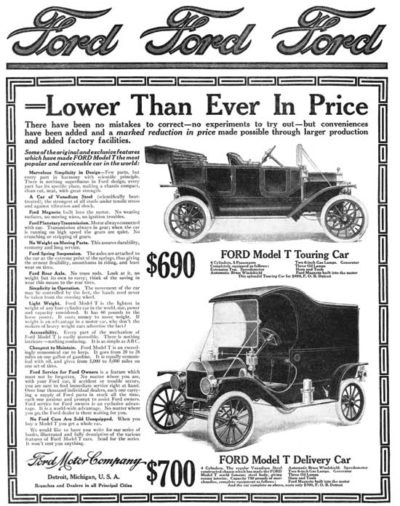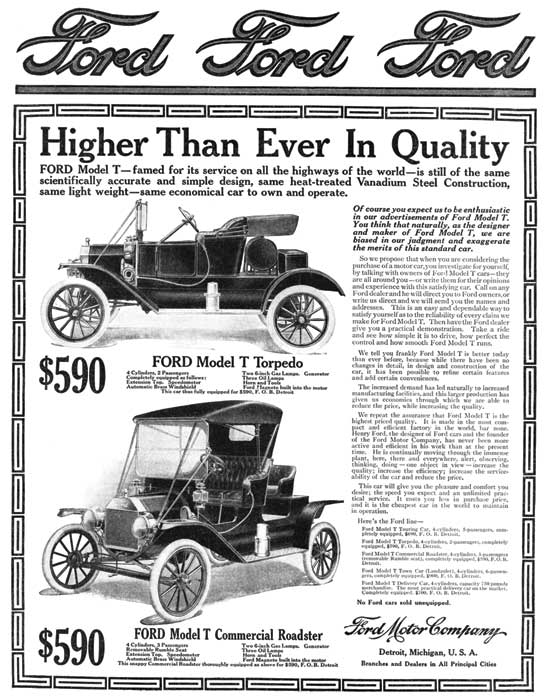Henry Ford’s Grandson Defends the Car
This article and other features about the early automobile can be found in the Post’s Special Collector’s Edition: Automobiles in America!
Scion of the famous automobile family, Henry Ford II wrote this Post article in 1976 at the height of the energy crisis. In a time of oil shortages, long gas lines, and worries about U.S. dependence on the oil-producing nations of the Middle East, Ford defends the car and his grandfather’s legacy.
It was just 70 years ago that my grandfather, Henry Ford, wrote a letter to a magazine called The Automobile describing his plans to build 20,000 runabouts the following year. One purpose of the letter was to answer the many skeptics who saw the automobile only as a fad. He wrote: “The assertion has often been made that it would be only a question of a few years before the automobile industry would go the way the bicycle went. I think this is in no way a fair comparison and that the automobile, while it may have been a luxury when first put out, is now one of the absolute necessities of our later-day civilization.”
That letter was written when the car was still something of a curiosity. It had not yet gone into mass production. There was no highway system worthy of the name. The relatively few cars on the roads were mostly in the hands of people of means. There were millions of people in the country who had never seen an automobile, and many towns and villages where none had ever appeared.
But it was in that same year, 1906, that the automobile proved to be the absolute necessity that my grandfather had called it. When the San Francisco earthquake struck, the 200 private automobiles in the city were immediately pressed into service, transporting the injured to hospitals, moving police from one part of the stricken city to another, and helping out in a variety of ways. When it was all over, the San Francisco Chronicle observed: “Men high in official service … say that, but for the auto, it would not have been possible to save even a portion of the city or to take care of the sick or to preserve a semblance of law and order.”

I recall my grandfather’s letter and the role cars played in the San Francisco earthquake only to provide some historical perspective. In order to look at the future of the automobile with any degree of objectivity, I believe you have to remember that the automobile has always had its share of critics. It has them today and it will certainly continue to have them in the future.
In the early part of the century, the critics of the car would see one stalled at the side of the road, laugh at the hapless driver and tell him — in that memorable phrase — to get a horse. Today’s critics are more sophisticated. They assail our automotive culture for the pollution it has brought, for destroying the beauty of the countryside, for congesting the cities, and for a variety of other real and imagined sins too numerous to mention here.
Some of the critics’ charges are true, some are exaggerated, and some are completely false. But the important point is that the automobile is here to stay. Its use will continue to grow, not only in the United States, but in Europe and Asia as well. In the underdeveloped nations of the world, cars and trucks will exert enormous influence in raising the standard of living and providing millions with a cheap, fast, and comfortable means of transportation.
—“A Message from Henry Ford II,”
The Saturday Evening Post, November 1, 1976
